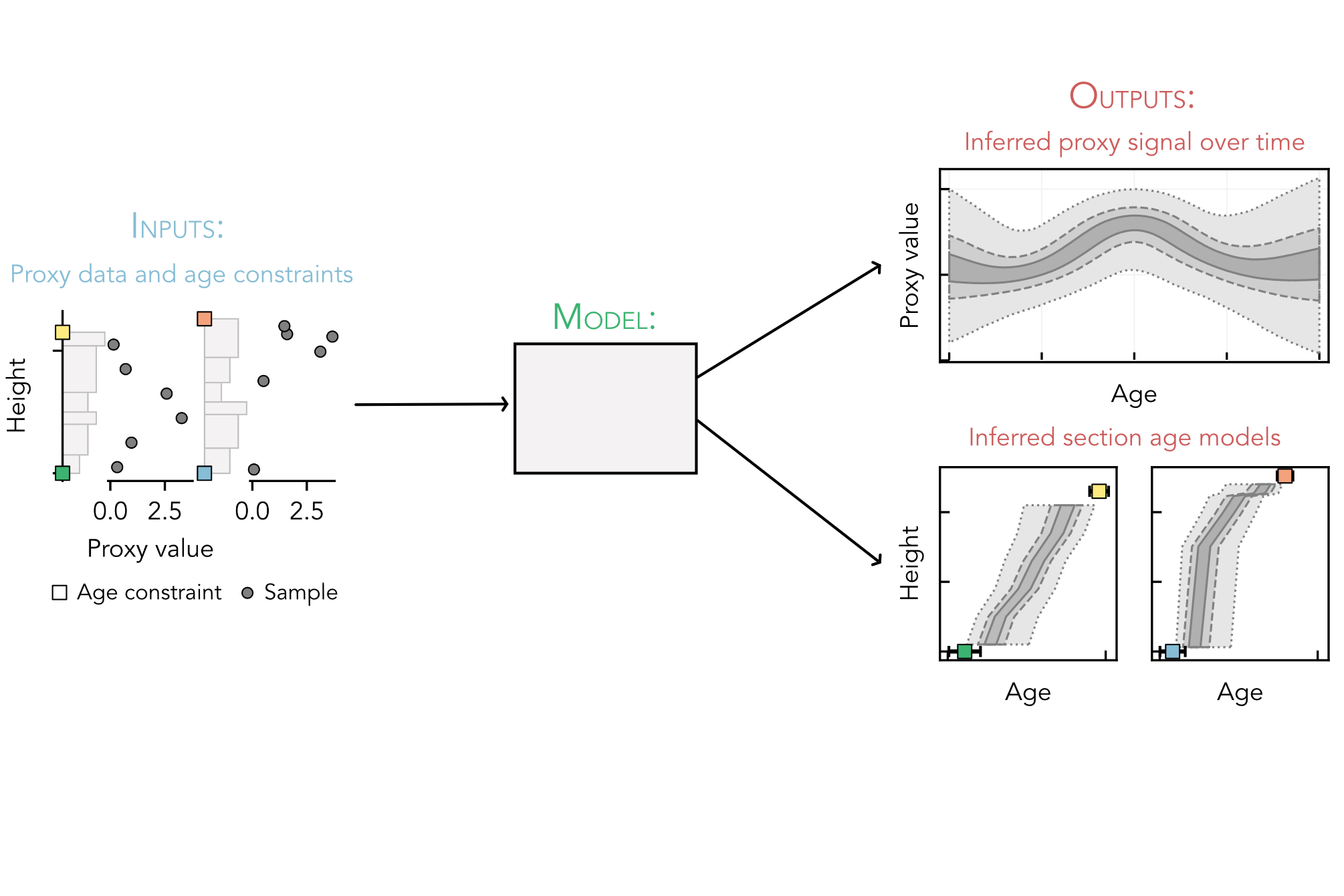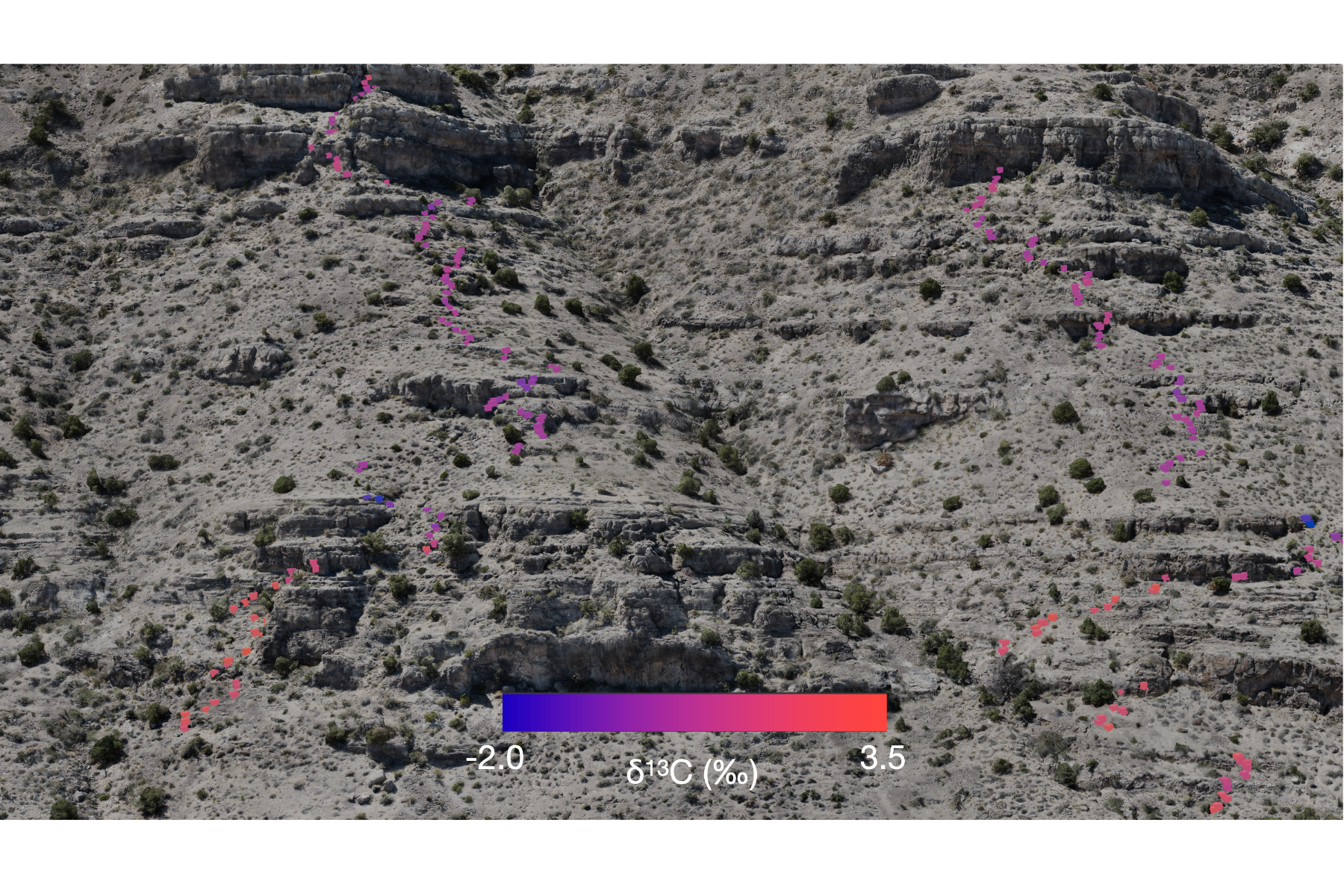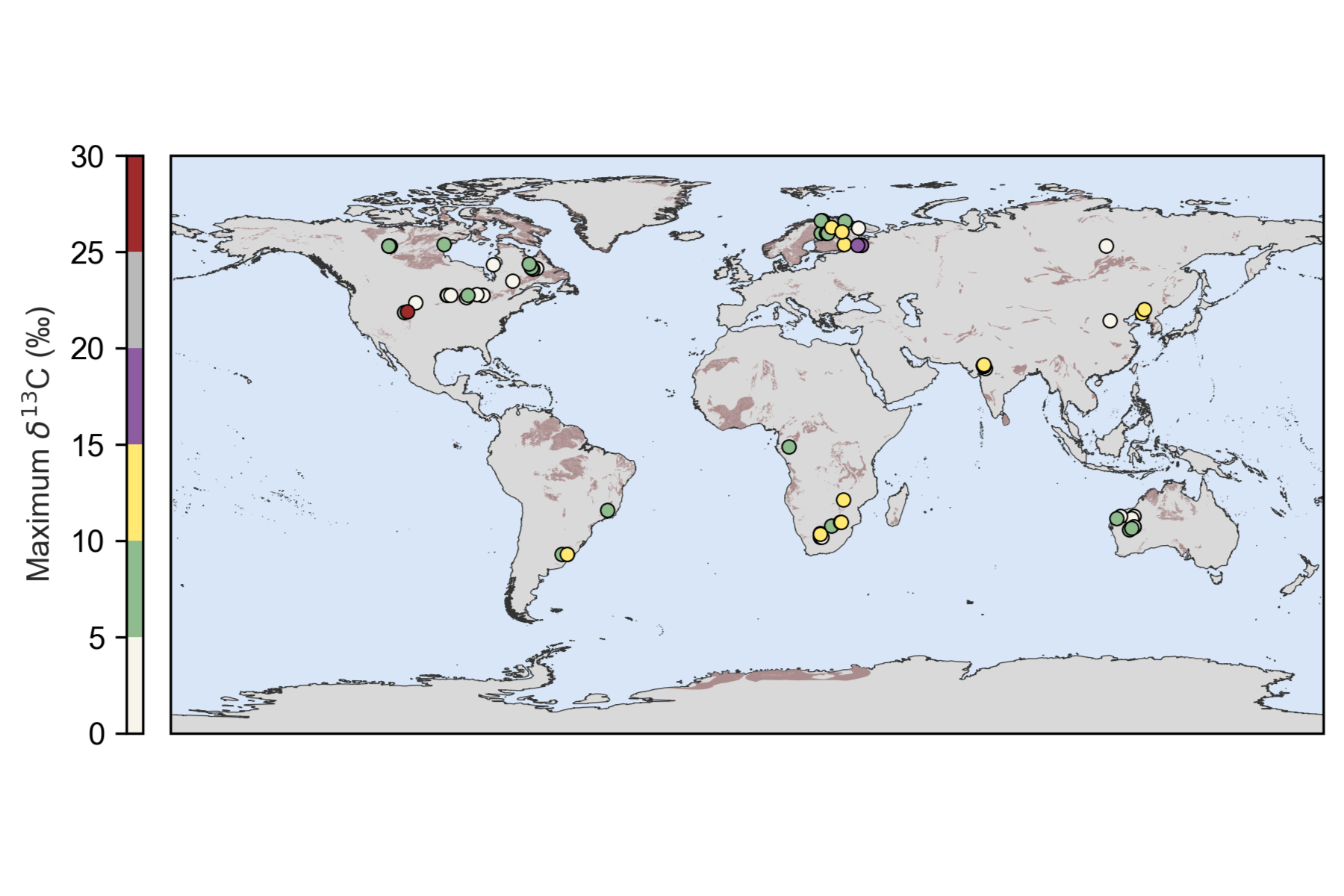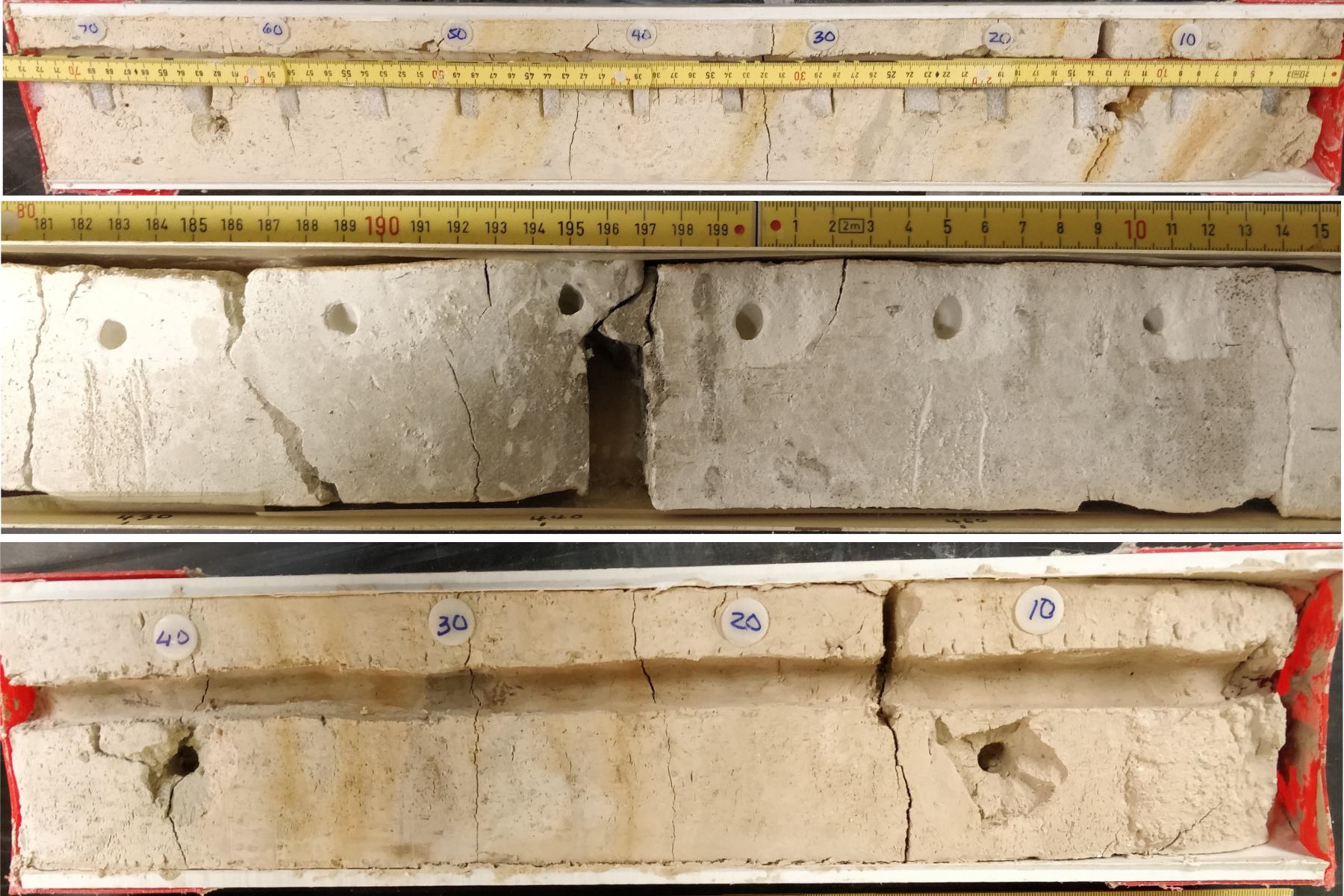Earth History
quantitative stratigraphy | sedimentology | isotope geochemistry

Reconstructing past Earth system change from the stratigraphic record
Past changes in global biogeochemical cycling frequently are reconstructed using geochemical proxies preserved in ancient sedimentary rocks. Reconstructions of pre-Cenozoic Earth system change rely primarily on sediments deposited in shallow-water environments, which have complex depositional histories, are prone to diagenetic alteration, and may be influenced by both local and global processes. These complexities can lead to inaccurate and biased reconstructions of past Earth system change.
To tackle these complexities, I developed a new Bayesian statistical model for reconstructing regional and global proxy change over time from the stratigraphic record (Edmonsond & Dyer, 2025). In addition to testing hypotheses about past Earth system change, the model provides a framework for stratigraphic correlation and age model construction. The model code is available as an open-source and fully-documented Python package (StratMC).

Spatial geochemical variability
The carbon isotopic composition of ancient carbonate rocks (δ13Ccarb) is used to reconstruct past perturbations to Earth's surface carbon cycle. However, local biological activity, sediment transport processes, and diagenesis partially decouple the chemistry of shallow-water carbonate sediments from the open ocean. As a result, δ13Ccarb varies both within and among different depositional environments. To learn about past global carbon cycling from the rock record, we must understand how this local variability is translated to and ultimately preserved in the stratigraphic record.
Currently, I am studying Paleozoic shallow-water carbonates in the western United States and Canadian Rockies to understand how spatial patterns in carbonate geochemistry can be used to fingerprint different primary and post-depositional processes in the rock record. This project combines field observations, drone photogrammetry, computational modeling, and stable isotope geochemistry.

Carbon cycling across Earth's Great Oxidation
The rise of atmospheric oxygen during the Great Oxidation Event (GOE; ca. 2.5 to 2.1 billion years ago) marks a critical juncture in Earth's biogeochemical evolution. The chemistry of co-eval marine carbonate sediments provides insight to global carbon cycling during this interval. Specifically, a large and long-lived carbon isotope (δ13C) excursion, the Lomagundi-Jatuli Excursion (LJE), suggests the GOE was accompanied by a major carbon cycle perturbation. However, the excursion's cause, timing, magnitude, and relationship with the GOE remain contentious due to the incomplete nature of the sedimentary record.
I used StratMC to reconstruct Paleoproterozoic δ13C from a global data compilation. My results provide revised constraints on the timing and magnitude of the LJE that elucidate its temporal relationship with oxygenation. This work is in press at PNAS.

Pleistocene carbonate geochemistry
Shallow-water carbonate sediments from the most recent Pleistocene glacial cycles provide an opportunity to measure the sensitivity of δ13Ccarb to geologically rapid changes in climate. However, the chemistry of pre-Holocene shallow-water carbonates was overprinted by meteoric diagenesis during the last glaciation. To study older time periods, we instead must rely on sediment that was produced in shallow waters and then transported to adjacent slope and basin environments, which are protected from meteoric alteration during sea level fall.
I studied short piston cores from deep waters around the Bahamas carbonate platforms to quantify differences in shallow-water carbonate production and geochemistry between the current Holocene interglacial, the last glacial period, and the last interglacial period. I found that despite differences in regional climate, surface conditions, and sediment production, the δ13C of aragonite mud remained constant between the Holocene and the last interglacial period. In addition, mineralogical and stable isotope data suggest that aragonite mud production persists in slope environments during glacial sea level lowstands. This work was published in Earth and Planetary Science Letters.